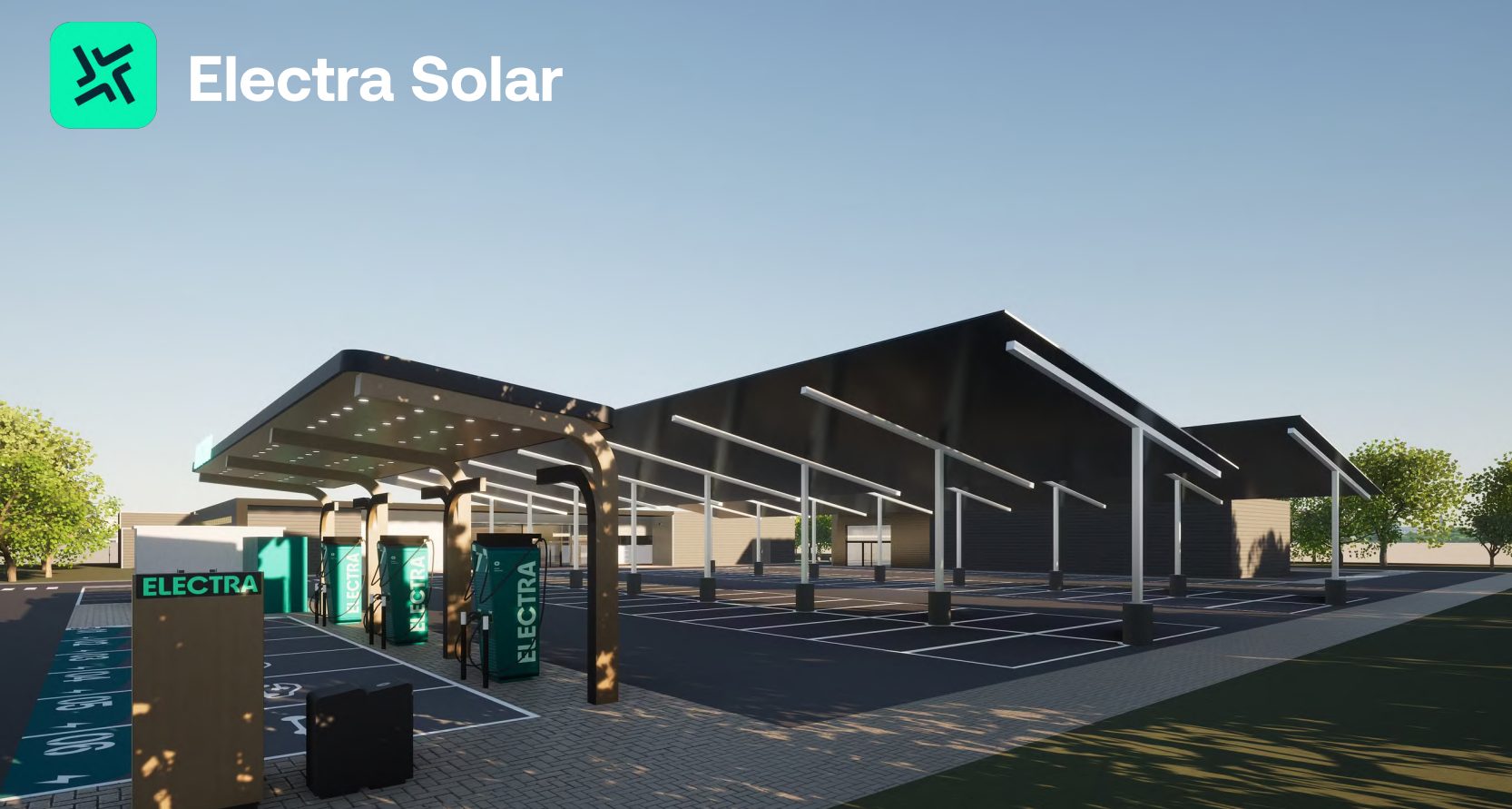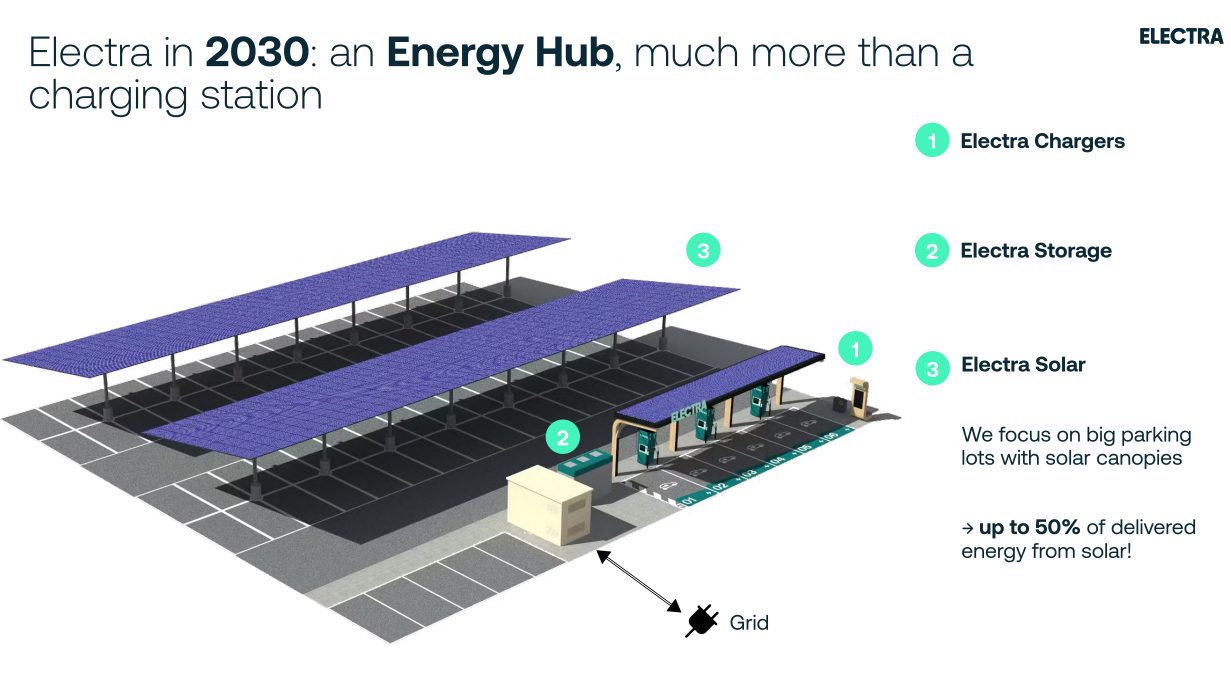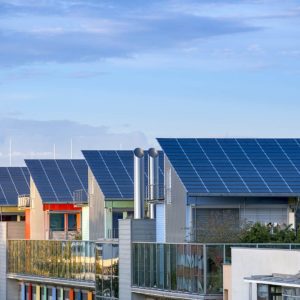For two years, the charging station operator Electra has been engaged in a deep strategic reflection to become an integrated energy player, capable of producing, storing, and distributing electricity on its own sites. This ambition is part of a rapidly evolving regulatory context, where self-consumption is emerging as both an economic and ecological lever.
This transformation was sparked by several converging signals, starting with an awareness coming from the field, particularly through commercial exchanges with land-holding companies. In the wake of the APER law (Accelerating the Production of Renewable Energies), these partners are seeking to combine EV charging infrastructure (IRVE) and photovoltaic production and expressing the need for a single point of contact. This presents an opportunity for Electra to offer an integrated solution with harmonized leases, which could become a decisive factor in future calls for tenders.
Today, Electra clearly states its ambition: to integrate the entire value chain, from production to consumption. In a few years, “a key milestone is to reach 1TWh of consumption in Europe,” says Arthur Marronnier, a symbolic threshold that would mark Electra’s entry into the court of major energy players.

Why did Electra launch this project ?
Beyond field feedback, the regulatory context played a key role. The drop in solar electricity purchase tariffs, the rise in grid fees, and the limited economic interest of injecting electricity into the grid have increased the appeal of self-consumption. Solar energy is often produced when prices are lowest (midday), hence the interest in consuming locally and storing energy via batteries.
In France specifically, the TIRUERT “bonus” planned for 2025, also offers a significant advantage and acts as a catalyst. It values each locally consumed kWh as 100% renewable, compared to only 25% if drawn from the grid. This fourfold multiplier makes self-consumption projects for charging stations much more attractive and strengthens the model’s viability.
How does the operational model work ?
Electra is not an installer but acts as a SPOC (Single Point of Contact). It coordinates service providers end-to-end, relying on partnerships with photovoltaic developers. Since contracts between PV developers and parking owners are often complex, Electra simplifies this relationship by offering an integrated IRVE + solar solution, with a single contact and harmonized contracts. It also considers direct investment in assets through third-party investor models, while maintaining for the moment a partnership-based approach.
What is the economic model ?
Electra takes on the risk related to the self-consumption rate, allowing it to optimize its offer: better purchase prices, combined IRVE + PV rent, and control over the energy strategy. This also enables optimization of battery and charging station usage. In France, without the TIRUERT bonus, the low profitability of PV on carports would limit direct gains. The bonus thus becomes a profitability trigger, combined with savings on TURPE. Electra aims for a 50% self-production rate and 80–90% self-consumption on its sites.

What are the technical innovations ?
Electra is accelerating the deployment of stations equipped with batteries, with several dozen sites in Europe and POCs underway in multiple countries. The installed batteries have capacities of several hundred kWh. Unlike conventional solar developers, Electra makes its batteries profitable even without photovoltaic production thanks to peak charging management, energy arbitrage and participation in grid services (reserve, frequency, etc.).
In this logic, solar never stands alone: without batteries, it loses its value. But Electra is not aiming to disconnect from the grid, no off-grid shift for now. The company prefers to stay connected while maximizing the energy autonomy of its stations.
Additionally, to manage batteries hour by hour, Electra is developing an internal dispatch algorithm based on the load curve, self-production rate and arbitrage opportunities.
Finally, to ensure resilience and responsiveness, Electra installs smart local control boxes. These controllers allow local station management without relying on the cloud, which is crucial for grid services requiring responses within hundreds of milliseconds. They also enable local power limit enforcement.
Where does the Solar offering stand today ?
Electra signed its first site this summer, in partnership with solar developer Hornet Energies and the Leclerc Le Bosc store located in southern France near Montpellier, with an opening planned at the end of 2026. This pilot site, which will be quickly followed by about ten more by the end of the year, marks the concrete launch of this new strategy, with a clear ambition: to make Electra a key player in decentralized energy.


